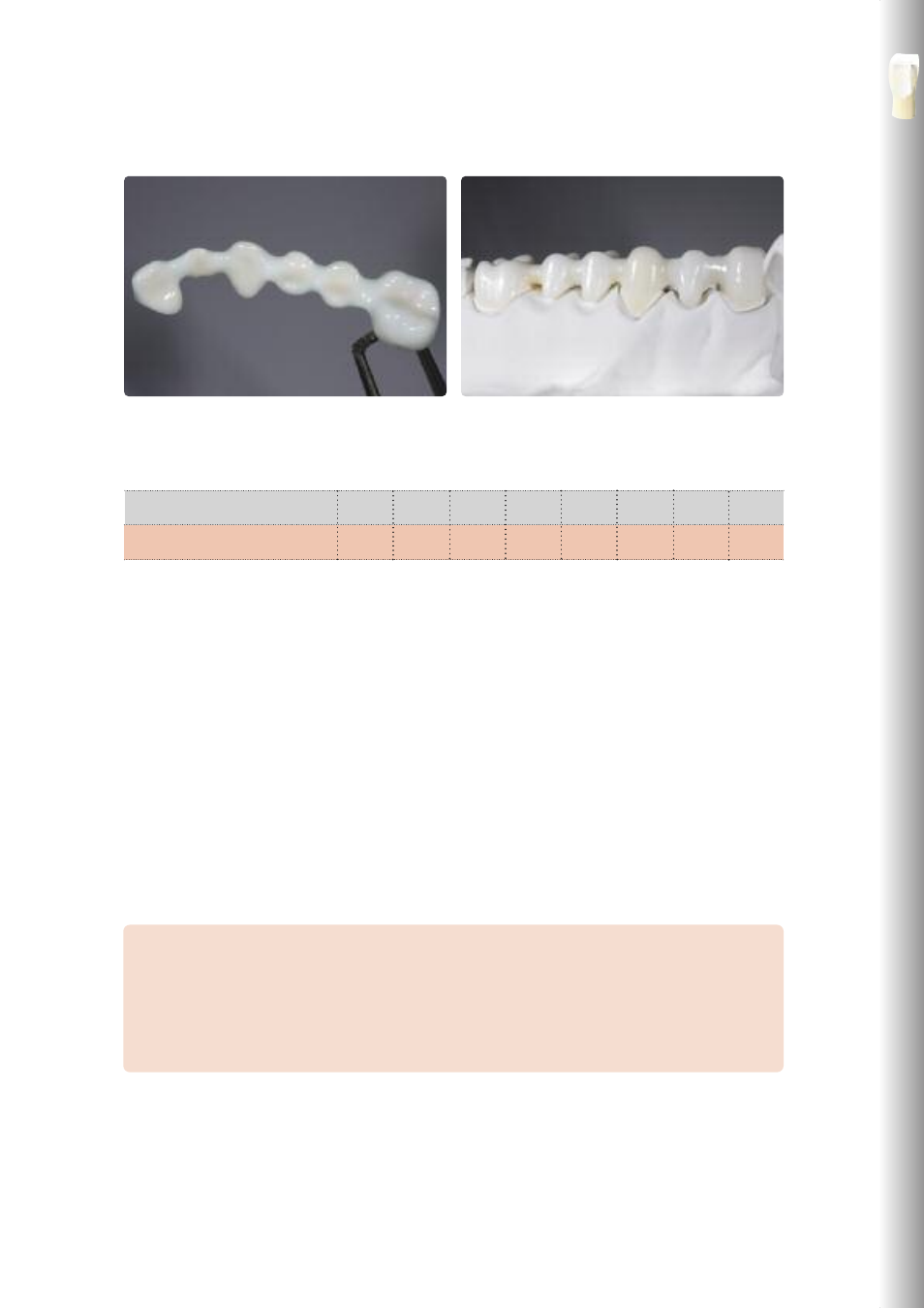Ivoclar Vivadent IPS e.max ZirPress User Manual
Page 17

17
IPS e.max Ceram Intensive ZirLiner can be used to design intensively shaded areas.
The fired ZirLiner shows a homogeneous, silky-mat surface.
C
li
n
ic
a
l
S
te
p
s,
F
ra
m
e
w
o
rk
P
re
p
a
ra
ti
o
n
,
C
o
n
to
u
ri
n
g
,
P
re
ss
in
g
P
ro
ce
d
u
re
Firing parameters for the IPS e.max Ceram ZirLiner firing
IPS e.max Ceram on IPS e.max ZirPress
B
S
t
➚
T
H
V
1
V
2
L
°C/°F
min.
°C/°F/min.
°C/°F
min.
°C/°F
°C/°F
°C/°F
ZirLiner firing before wax-up and pressing
403/757
4:00
40/72
960/1760
1:00
450/842
959/1758
0
Firing process for zirconium oxide-supported restorations
In order to obtain optimum firing results for IPS e.max Ceram, the following points have to be observed:
– In order to ensure an even thickness of the veneer, the zirconium oxide framework must be designed in such a way that
it supports the cusps. Depending on the clinical situation, the results are different wall thicknesses and dimensions of
the framework.
– Since ZrO
2
is a poor heat conductor compared to other framework materials, a low temperature increase rate t
➚ is
required. This ensures even heat distribution in the bonding area between the framework and the veneer as well as the
outer surfaces of the restoration even with different framework thicknesses. In this way, an optimum bond as well as
even sintering of the layering materials are achieved.
– During cooling of the restorations after firing, stress occurs as a result of the different cooling speed at the outside and
within the material. With long-term cooling L for the “final firing cycle” this stress can be reduced and the risk of
delamination minimized, particularly in ZrO
2
-supported restorations.
Notes on cooling after completion of the firing program
In order to ensure “smooth” cooling of the restoration after firing, please observe the following notes:
– Wait for the acoustic signal or optical indication of the furnace at the end of the firing cycle before the firing tray with
the fired objects is removed.
– Do not touch the hot objects with metal tongs.
– Allow the objects to cool to room temperature in a place protected from draft.
– Do not blast or quench the objects.
